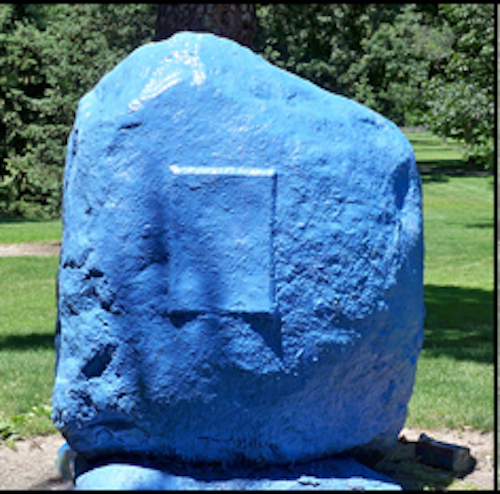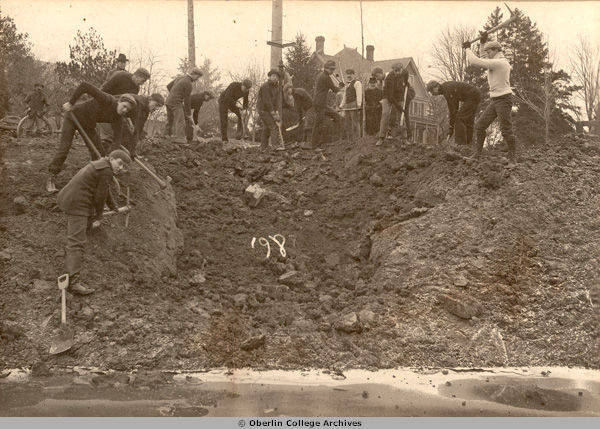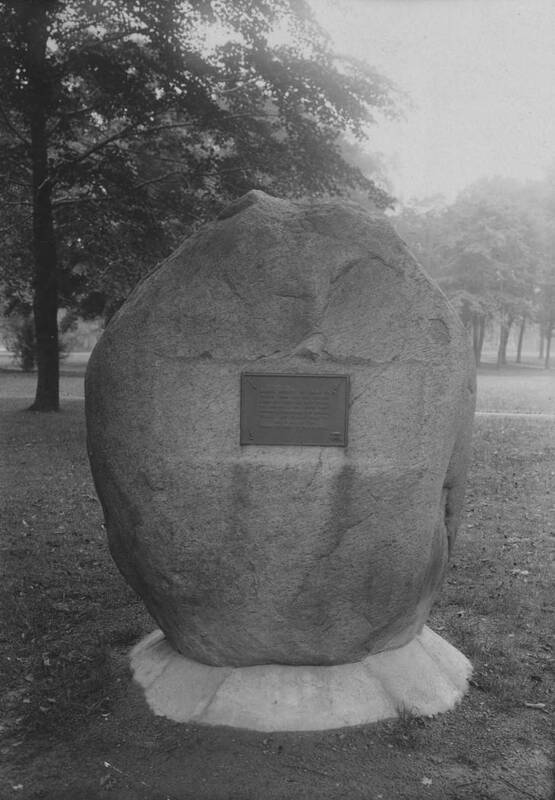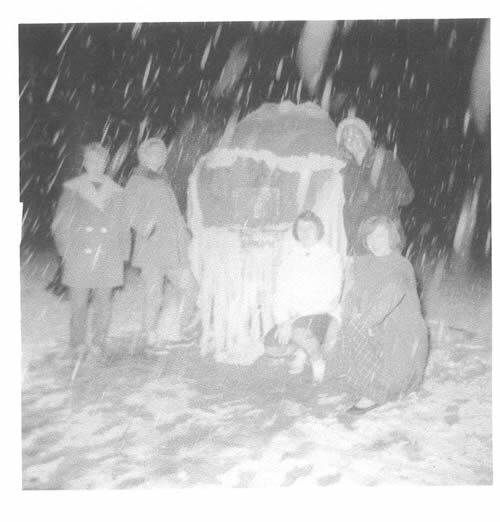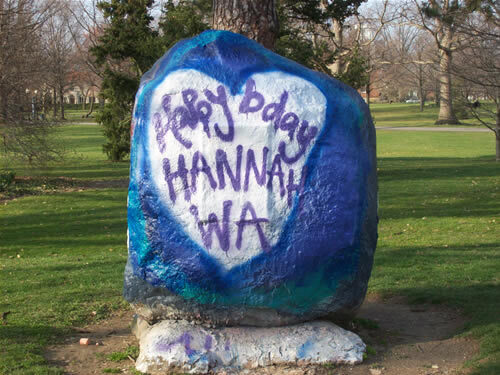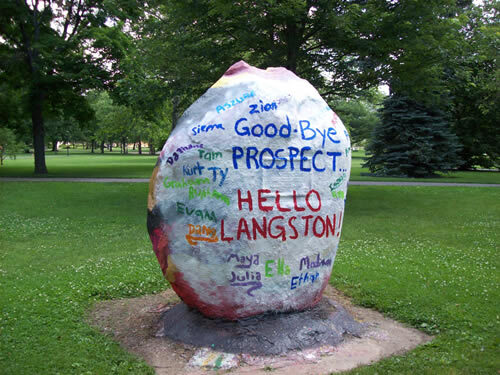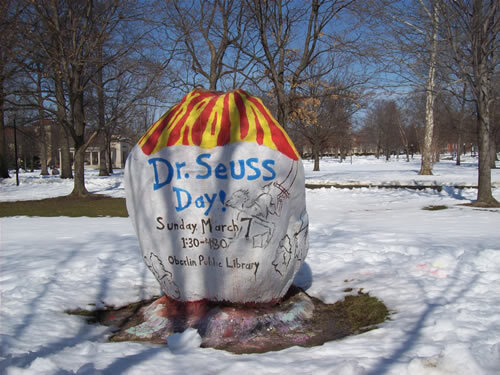Why are there painted rocks on Tappan Square?
The first two of the three rocks arrived on Tappan Square at tail end of the 19th century. Tappan Square, the 13-acre green space that unites the college and the community, was initially cleared of trees when Oberlin was first settled and for a while, the space housed several college buildings, which have since been removed. All three of the rocks on square started out as more traditional monuments. If you look hard, you just might see their original plaques through layers and layers of paint. The rock nearest the arch is the Class of 1882 rock, although not much is known about when or how it was presented to the college. The boulder across from the shops is the “Founder’s Boulder.” It was a gifted to the college in 1933 by Edwin Hill, who found it on his farm, to honor Oberlin’s two founders, John J. Shipherd and Philo P. Stewart.
But the rock with the story is the big one across from the Conservatory. In the fall of 1897, acting college President and geology professor A.A. Wright told some seniors taking his class about an interesting glacial boulder located in Plumb Creek. Wright urged the students to retrieve the boulder and to place in on campus. On the evening of December 3, 1897, 39 members of the Class of 1898 got permission to stay out all night, and using shovels, picks, spades, crow bars and chains, they dug up the 7-ton rock and managed to move it to Tappan Square.
For reasons that are now murky, the Class of 1898 worried that the class of 1897 might sabotage their rock. So they guarded it day and night until they could formally present it to the college as a gift from the Class of 1898. They claimed the boulder was important to the study of geology, although it never seems to have been used for that purpose.
The three rocks sat undisturbed on Tappan Square for years, but in 1962, Oberlin students painted the largest of the three rocks in bright colors. “Glacial Easter Eggs laid by the class of 1964,” read a small sign nearby. That December, some freshman decorated the 1898 boulder as Santa Claus; in the spring, they decorated the same rock as the Easter bunny. Initially, the college considered painting the rocks an act of vandalism—students were defacing monuments, after all! The college paid hundreds of dollars to have the painted rocks sandblasted clean, and even considered moving them to the Allen Art Museum. But eventually, they accepted what seemed inevitable: that the rocks would become a kind of living memorial. Painting the rocks stopped being vandalism and started becoming an Oberlin tradition.
As the tradition took root, Oberlin college students and community members alike began to paint the rocks to announce upcoming events, weddings, births and deaths. The Rocks offer a place to express political opinions or to urge community members to become involved in a cause. And Oberlin residents paint them for fun, using the rocks as a canvas for art projects of all kinds.
Today, the Oberlin Rocks help bring the college and the community together. They are common property, available to and shared by all. One day, 5th graders might paint the rocks to celebrate their graduation to middle school. On another, Oberlin Conservatory students might advertise a concert. The Oberlin High School Art Club has reproduced famous paintings on the rocks and they are often covered in political messages, from the logo of presidential campaigns to reminders of Internatial AIDS Day.
These living monuments reflect Oberlin's energetic civic and artistic culture. Painting a rock--and doing it at night so no one knows who did it--is a kind of local rite of passage for young Oberlinians. The Oberlin Rocks are now a distinctive part of the community's identity.

